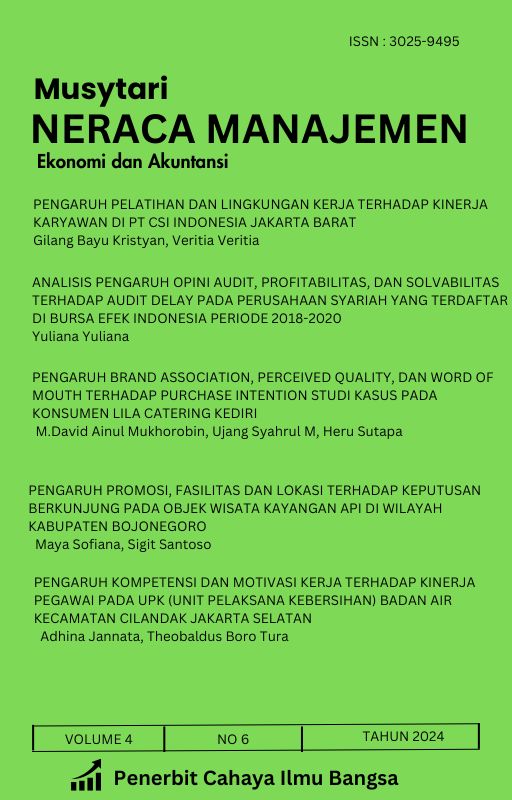OPTIMALISASI SUMBER DAYA DALAM PEMBIAYAAN PENDIDIKAN SMA SWASTA: STUDI TENTANG DIVERSIFIKASI PENDANAAN
Main Article Content
Abstract
The plan for a Golden Indonesia in 2045 will be realized if Indonesia's human resources are superior in quantity and quality. At present, the situation that has just materialized is only limited to the quantity, while the quality has not yet reached the expected stage. To reach the stage of quality human resources, quality educational facilities are also needed. One of them is by paying attention to the quality of all educational units regardless of their status. However, the fact is that not all education units receive sufficient attention in terms of funding. For example, the existence of private high schools is often marginalized even though it has an important role to fill the void of educational facilities that the government is unable to provide. The marginalized context in question is about the lack of maximum government contribution in its financing, so that the school often depends on student tuition. This research aims to identify the complexity of the funding problems experienced and the solutions implemented by private high schools. The approach used is qualitative with a document study method. The results show that funding problems in private senior high schools include dependence on student tuition as the main source of income, lack of subsidies from the government, and limited diversification of funding sources. This situation will certainly have an impact on the quality of educational facilities and the welfare of the students.
Keywords: education financing, private senior high schools, funding diversification
Downloads
Article Details

This work is licensed under a Creative Commons Attribution-NonCommercial 4.0 International License.
This work is licensed under a Creative Commons Attribution-ShareAlike 4.0 International License.
References
Arini, F. (2024). Mendorong Kolaborasi Antara Sektor Swasta, Pemerintah, dan Masyarakat Melalui Crowdfunding Untuk Meningkatkan Kualitas Pendidikan. Educatus: Jurnal Pendidikan, 2(1), 1–6.
Ayu, D. M., Girindratta, R., Nurfadillah, N., Fariz, F., & Mashur, M. Al. (2024). Strategi Pengelolaan Keuangan Sekolah Untuk Meningkatkan Efisiensi Sumber Daya. Jurnal Cendekia Ilmiah, 3(4), 1596–1603.
Joshi, R. (2018). Pendanaan Publik untuk Sekolah Swasta. Center for Indonesian Policy Study. https://www.cips-indonesia.org/pendanaan-publik
Losando, R. (2023). Strategi Kerja Sama Corporate Social Responsibility sebagai Sumber Pendanaan Berkelanjutan bagi Sekolah Kristen. Angelion: Jurnal Teologi Dan Pendidikan Kristen, 4(1), 86–95. https://doi.org/10.38189/jan.v4i1.457
Riyanti, T., & Nugraha, M. S. (2022). Evaluasi Efektivitas Manajemen Pembiayaan Pendidikan Menggunakan Model CIPP di SMA Swasta. Epistemic: Jurnal Ilmiah Pendidikan, 01(02), 131–152.
Sanga, L. D., & Wangdra, Y. (2023). Pendidikan Adalah Faktor Penentu Daya Saing Bangsa. Prosiding Seminar Nasional Ilmu Sosial Dan Teknologi (SNISTEK), 5(September), 84–90. https://doi.org/10.33884/psnistek.v5i.8067
Victorynie, I., Khumaidi, A., & Hamdani, U. L. (2024). Analisis Strategi Kepala Sekolah Madrasah Tsanawiyah Swasta di Bekasi dalam Menarik Minat Calon Siswa Baru. Attractive: Innovative Education Journal, 4(1), 1–12.
Yunita, I. (2021). Konsep Pengendalian Internal Sebagai Upaya Meminimalisir Tagihan Biaya Pendidikan Pada Sekolah Swasta. Al Qodiri: Jurnal Pendidikan, Sosial Dan Keagamaan, 18 No.3(85), 836–851. http://ejournal.kopertais4.or.id/tapalkuda/index.php/qodiri/article/view/4111/2951

